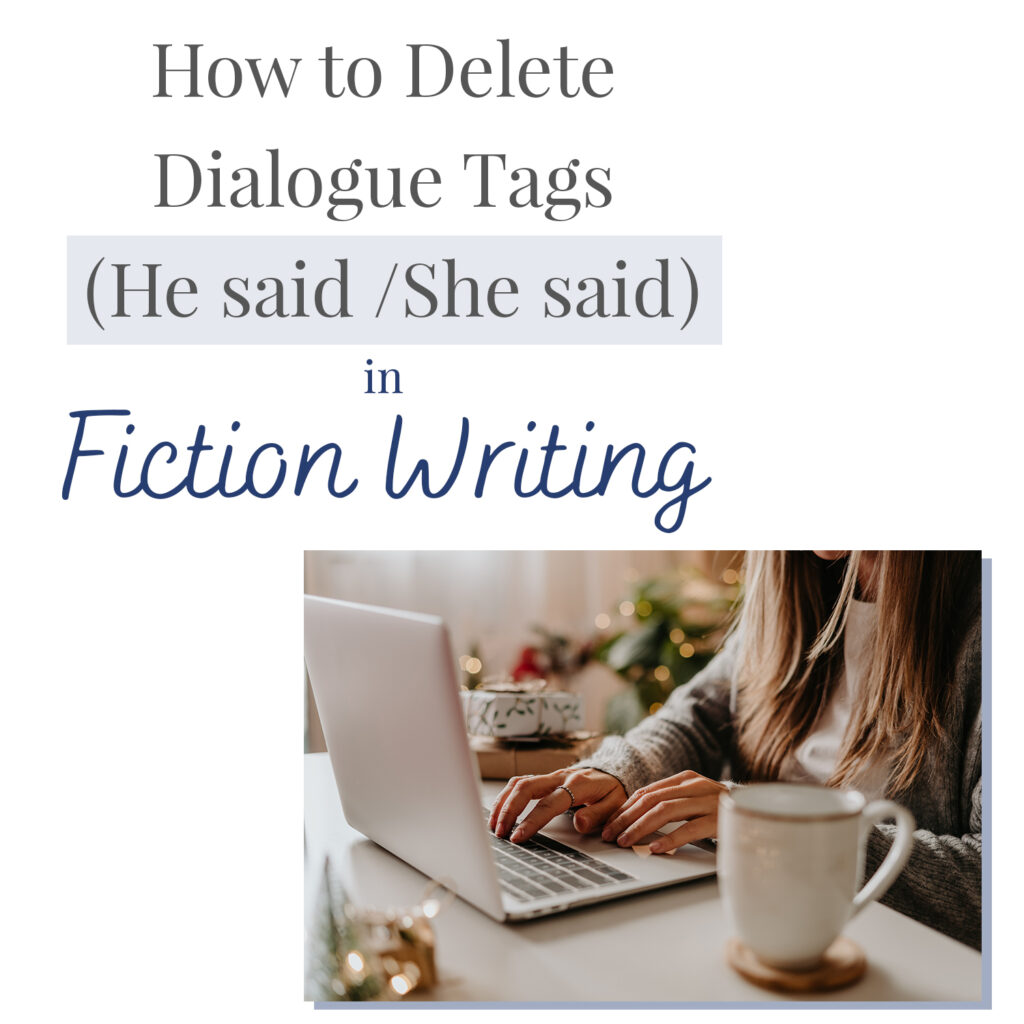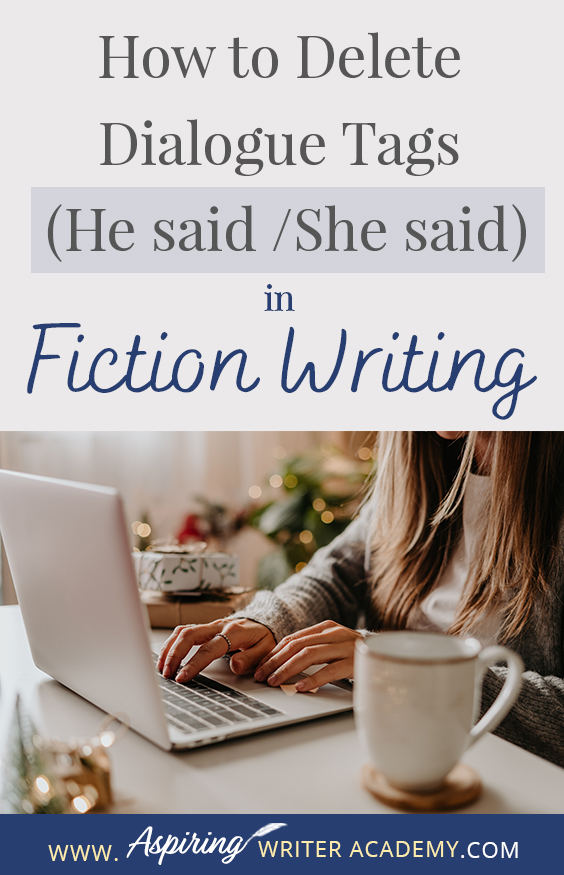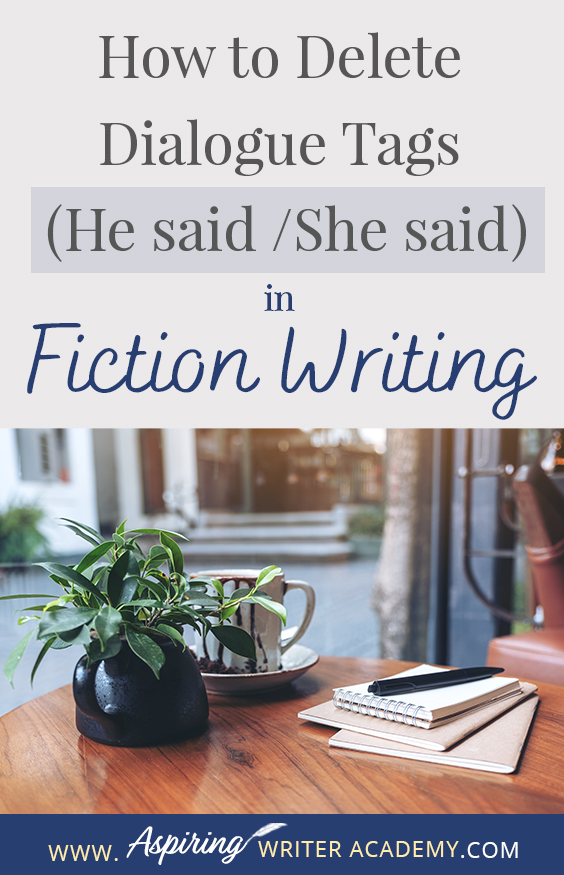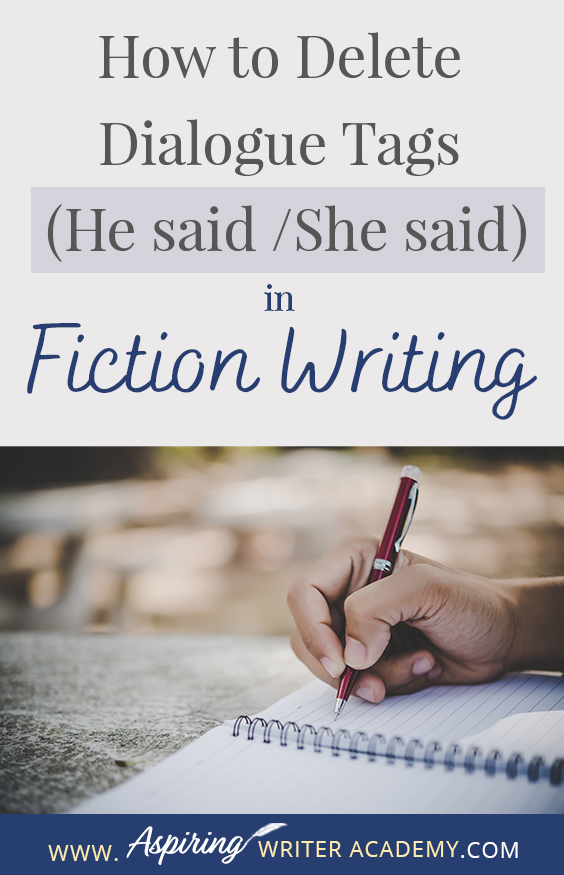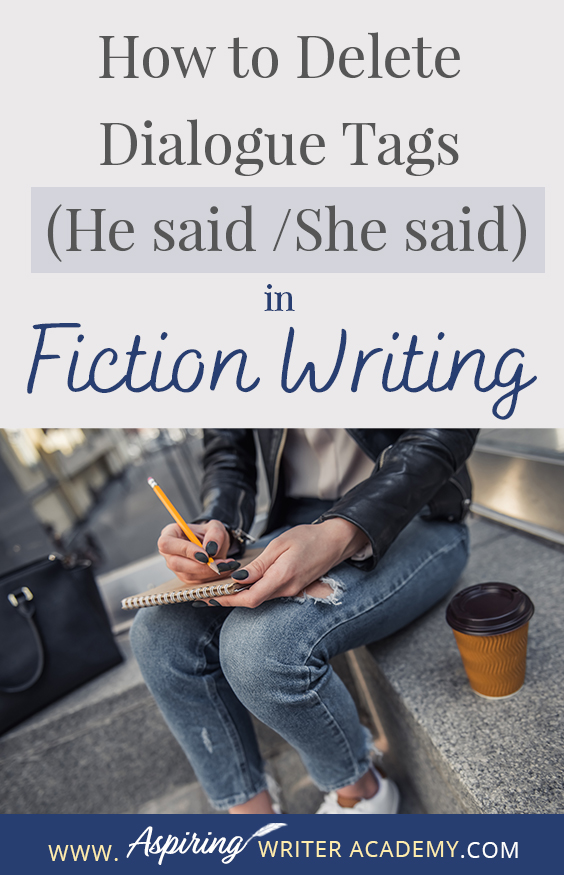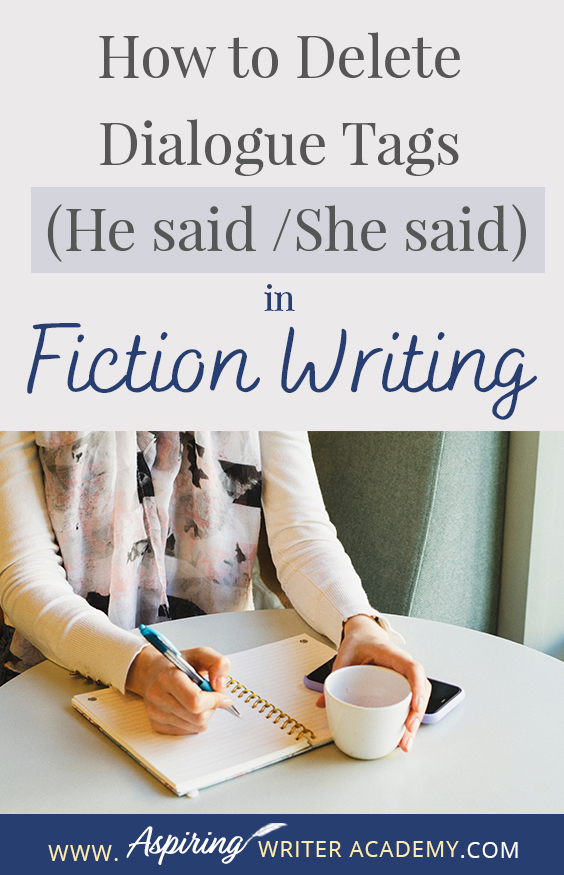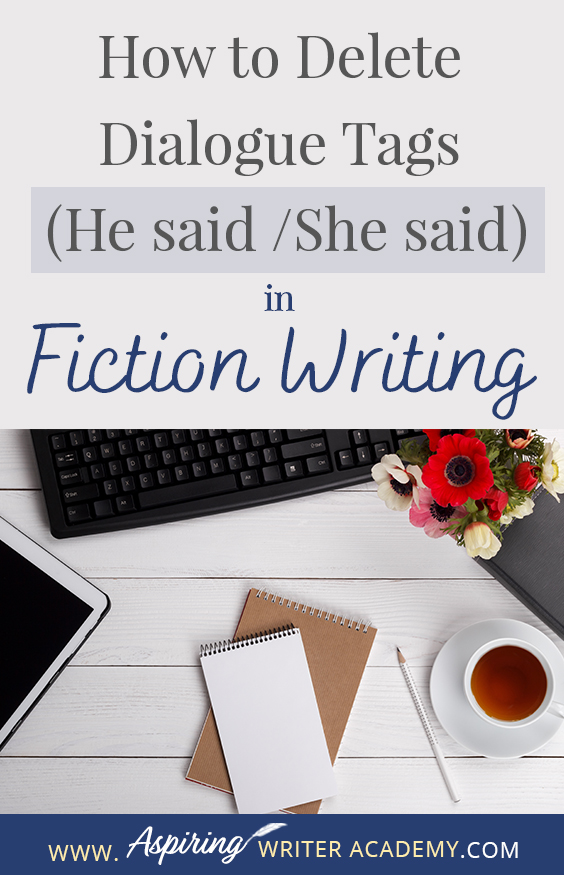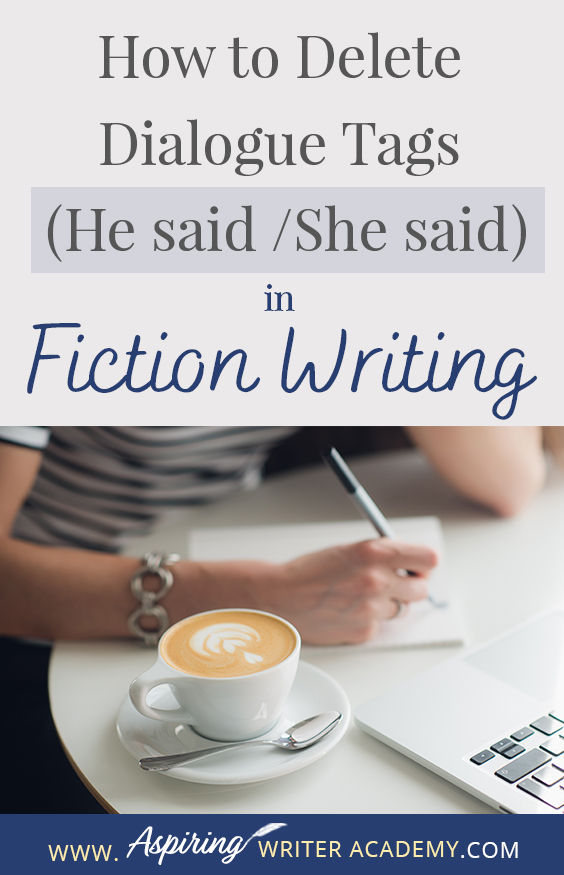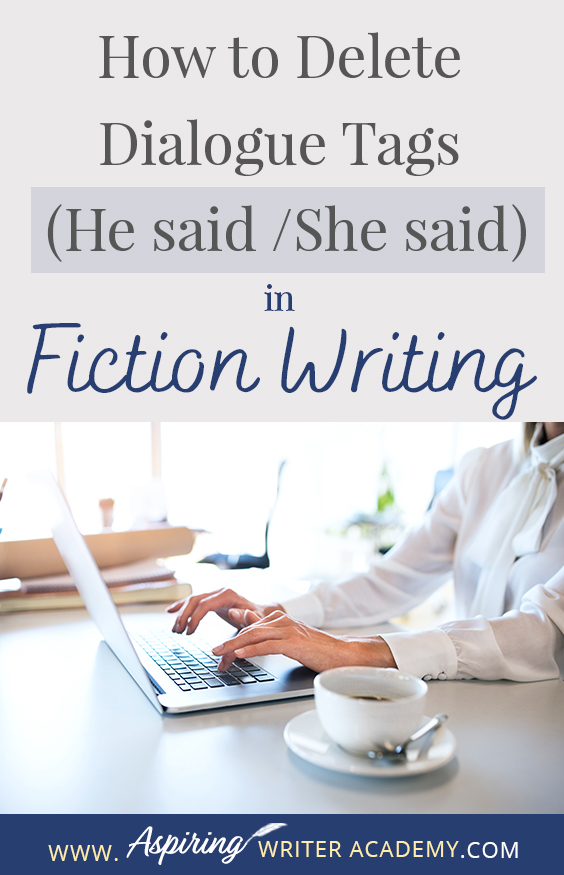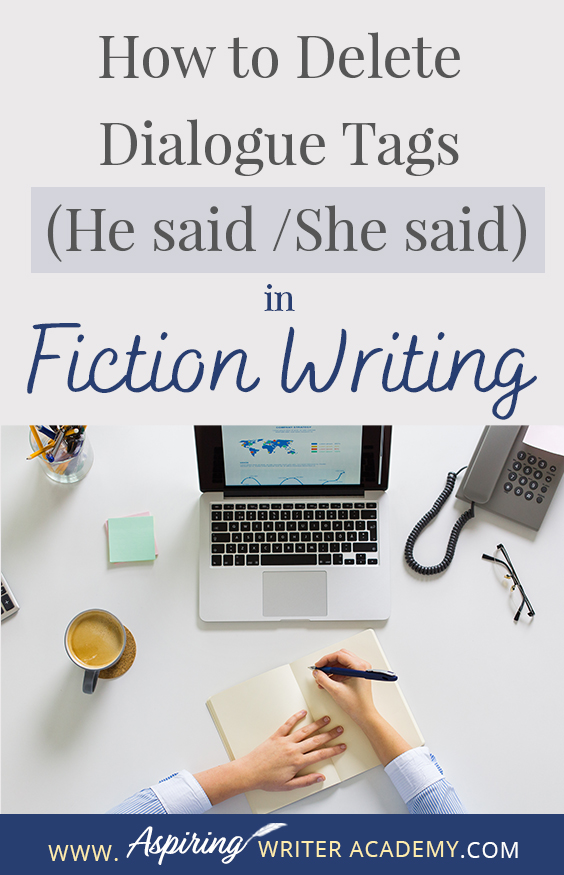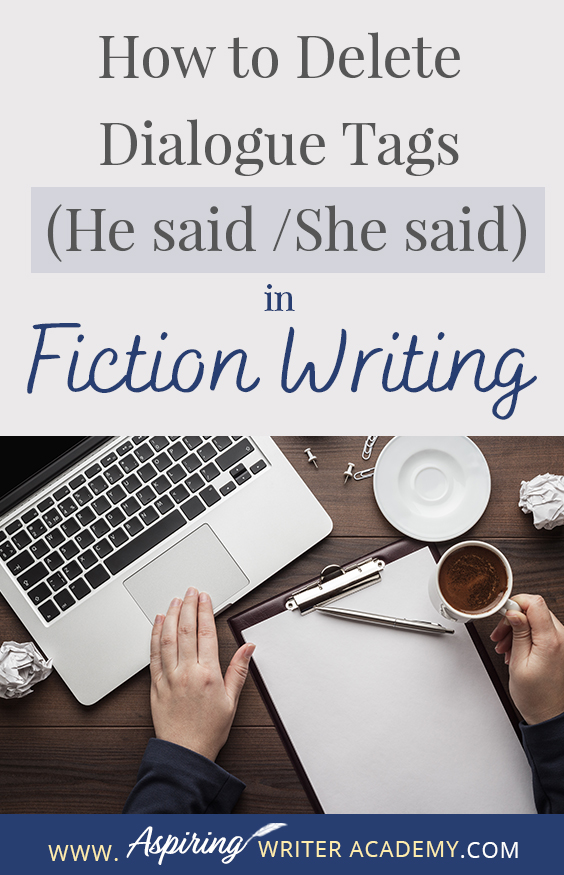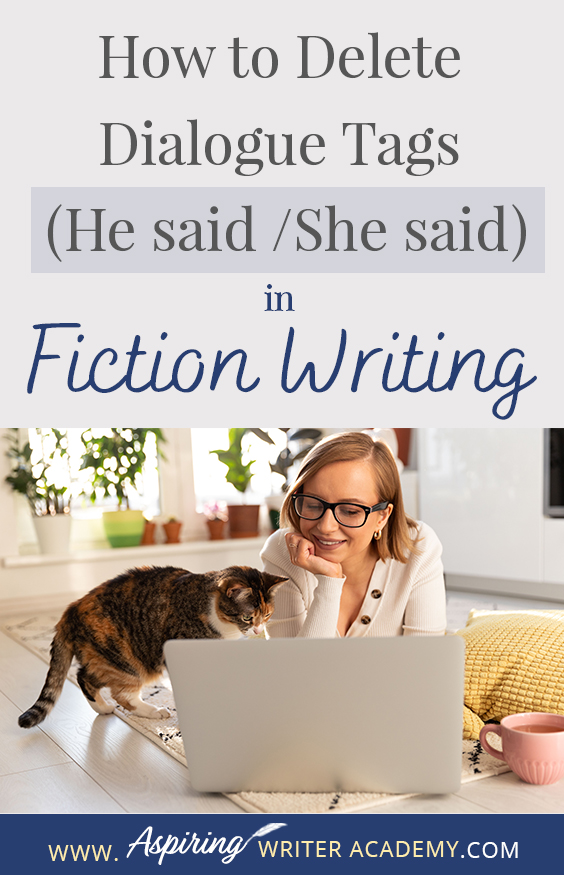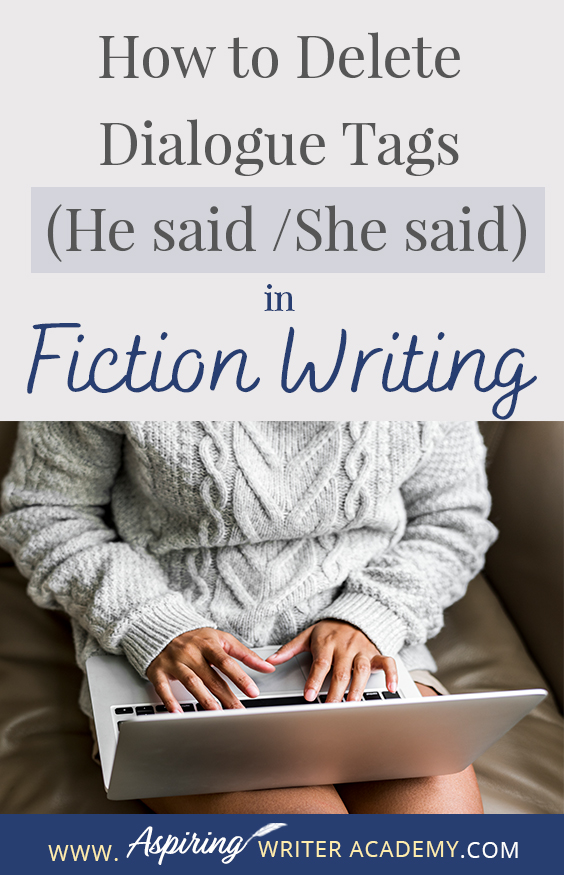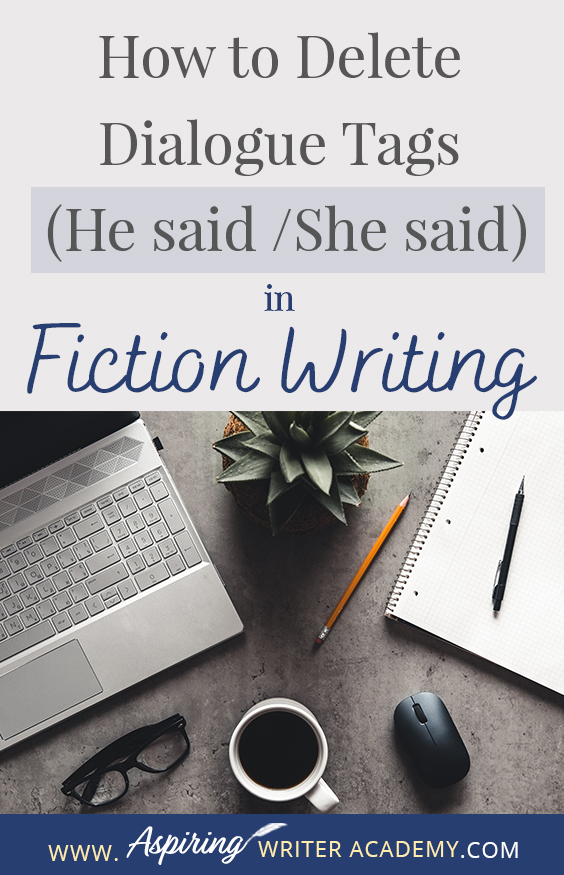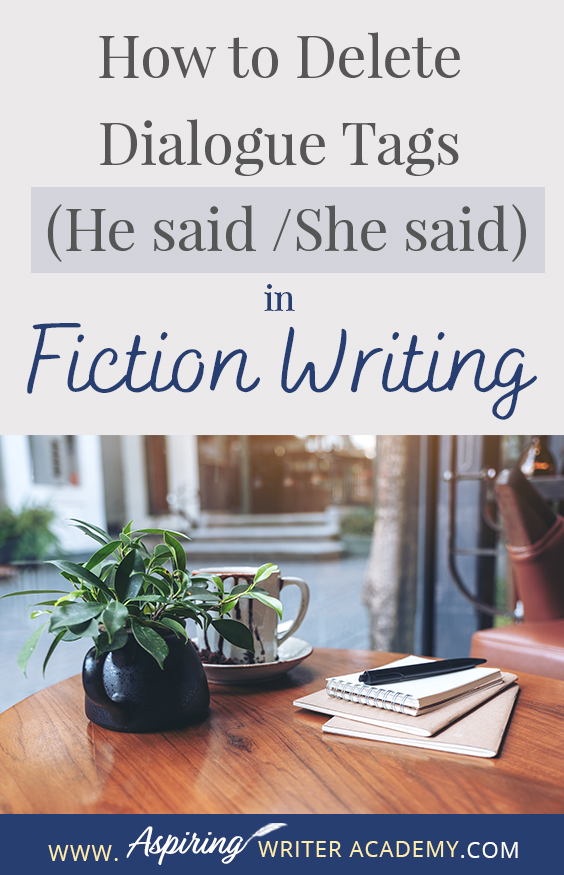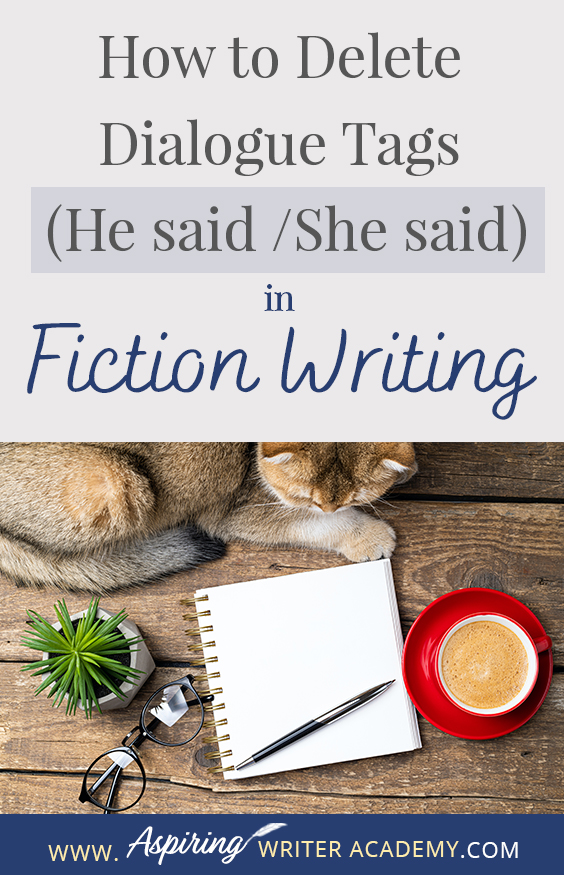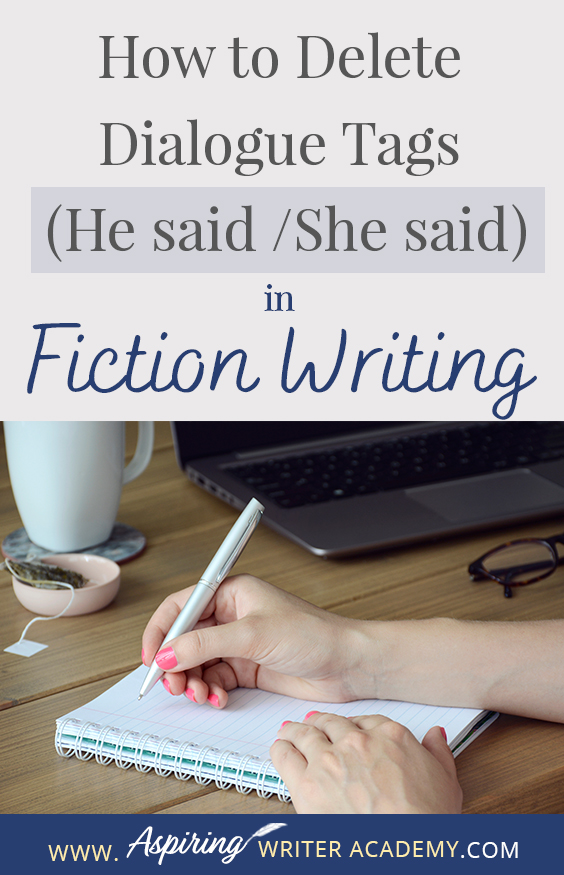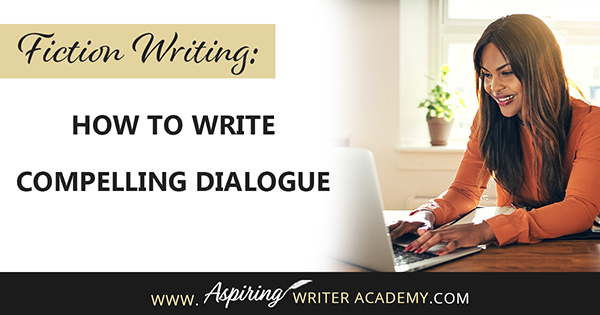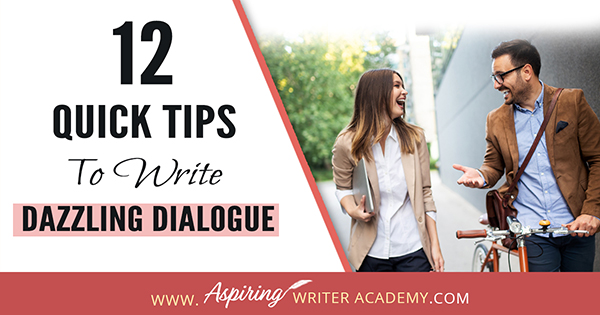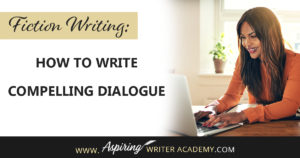How to Delete Dialogue Tags (He said /She said) in Fiction Writing

The goal of writing a fictional novel is to give your readers a unique, emotional experience. However, if there are too many clunky dialogue tag interruptions meant to identify which character is speaking, the reader may become frustrated and put the book down.
In our post, How to Delete Dialogue Tags (He said / She said) in Fiction Writing, you will learn various methods to make the verbal exchanges in your writing smoother, stronger, and more engaging for the reader.
You may have heard that your job as an author is to take the reader on an emotional journey or to create a unique experience or a world of escapism for your reader. The characters and the intensity of your story plot will draw the reader into your book, but it is the flow of the text, the unfolding of the story, the smoothness of the sentences that will keep them reading without really seeing the words on the page.
If there is something that jars the reader out of the story world, something that disrupts the story flow, like a multitude of clunky dialogue tags, your fictional story will be in trouble!
How Do You Delete Dialogue Tags in Fiction Writing?
A simple way to remove dialogue tags when writing your fictional novel is to use action beats, body language, and internal thought between verbal exchanges instead of the traditional ‘He said’ / ‘She said’ attributions.
Follow along as we discuss each of the following in more detail:
1) Action Beats
2) Body Language
3) Internal Thought
1) Action Beats
Instead of repeatedly using dialogue tags such as ‘he said’ or ‘she said’ or ‘he asked’ or ‘she replied,’ to tell the reader which character in your novel is speaking, try inserting a few action beats. An action beat is an action taken by the character who is speaking. The action sentence is not attached to the dialogue, therefore eliminating the need for a dialogue tag.
Instead of:
“Does your kitten have a name?” Mary asked.
Use an action beat to identify the speaker so that the tag ‘Mary asked’ is not necessary:
Mary bent down to pet the orange fur ball circling her feet. “Does your kitten have a name?”
Now the other character can respond to the question without having a dialogue tag interrupt the flow of the story.
You can also insert an action beat after the dialogue:
“Does your kitten have a name?” Mary bent down to pet the orange fur ball circling her feet.
However, you must always be careful not to ‘bury’ the dialogue in the middle of a paragraph, or between two action beats. You want the dialogue of your fictional novel to stand out, so keep it to the front of a paragraph or to the very end.
Instead of:
Mary bent to pet the orange fur ball. “Does your kitten have a name?” She smiled as the small animal began to purr.
Either keep the dialogue to the beginning of the paragraph or the end.
“Does your kitten have a name?” Mary bent to pet the orange fur ball and she smiled as the small animal began to purr.
Or
Mary bent to pet the orange fur ball. She smiled as the small animal began to purr. “Does your kitten have a name?”
Whenever you have back-and-forth dialogue between two or more characters, also try to keep all question and answer (stimulus & response) sequences together without dialogue tags, action beats, or anything else to keep them apart. It should read like a one-two punch (unless one character is deliberately stalling.)
Example:
Jim scanned the horizon and let out a grunt. “Think it might rain tonight?”
“Yep, you can bet on it.” Alan shot him a grin as if delighted at the prospect.
See Our Blog Post: Novel Writing Tips: Don’t Bury the Dialogue!
2) Body Language
A sentence indicating body language can also act to identify which character in your fictional novel is speaking. Body language can be broken into two types.
There is intentional body language or physical movement the character performs which can help establish the story setting and choreograph a scene with other characters in your book. This is the same as an action beat and can be used to replace dialogue tags.
Example:
Kurt marched across the crowded room, weaving around the other people in his path, and picked up a book from a shelf in the library’s east wing. “Why would anyone want to read about marine life anyway?”
Then there is unintentional knee-jerk reaction body language by the character that was not necessarily intended. An unconscious reaction instigated by a stimulus that makes the character gasp, cough, stiffen, jump back, or cause her smile to slip, or make her heart quicken, etc. The response can form a complete sentence before the dialogue so that you can delete the dialogue tag and keep your reader’s attention on the story.
Let’s look at some examples.
Instead of:
“I don’t understand why you collect so many books,” Karen said with disgust.
Try something like this:
Hot tears sprang into her eyes as she eyed the bookshelf which caught his attention. “I don’t understand why you collect so many books.”
Instead of:
“What do you mean, you don’t want to go to the dance with me?” he asked awkwardly.
Try something like this:
He tried to swallow the tight knot that had formed in the back of his throat. “What do you mean, you don’t want to go to the dance with me?”
See Our Blog Post: Fiction Writing: How to Write Compelling Dialogue
3) Internal Thought
Another way to eliminate dialogue tags in your fictional novel is to use the character’s internal thought in a sentence before or after their line of speech.
Instead of:
“Whatever it cost, you paid too much,” John said decisively.
Try something like this:
She actually believed this wretched stuff tasted good? After tasting the ice cream she prized so highly, John thought she must be out of her mind. “Whatever it cost, you paid too much.”
When writing your book, if you are firmly in the character’s point-of-view and there is only one other character in the scene, it might not even be necessary to state the character’s name.
Example:
She actually believed this wretched stuff tasted good? “Whatever it cost, you paid too much.”
Because of the back-and-forth dialogue that must have already transpired before these lines, the reader knows who is speaking without being told simply by the thought process.
The reader also knows that each new indented paragraph usually indicates a different speaker.
Example:
Jane reached up to brush a wayward strand of hair from his eyes. “You might look even
better with a haircut.”
“My hair is fine how it is. I don’t need to look any better.”
“Suit yourself.” She wished he would listen to her, but what could she do?
He met her gaze and sighed. “I suppose I could do with a slight trim.”
Do you see how to delete dialogue tags such as (He said / She said) in fiction writing?
See Our Blog Post: 12 Quick Tips to Write Dazzling Dialogue
Wrap-Up Exercise:
Take a section of your own writing and rewrite the sentences to eliminate as many dialogue tags as you can simply by using action beats, body language, and internal thought.
How does it read to you?
Is the flow of the text smoother? Stronger? More engaging? If not, how can you revise to make it even more so? Keep playing with the wording. What else can you bring into the scene?
Does this mean you should never use a dialogue tag when writing a fictional story?
Not necessarily. Sometimes inserting a dialogue tag with a line of speech is needed, especially when there are several characters all in one setting. However, you do want to use dialogue tags sparingly.
We hope you have enjoyed How to Delete Dialogue Tags (He said /She said) in Fiction Writing and that you have gained some valuable tips to make the verbal exchanges in your novel smoother and stronger, and more engaging for the reader.
If you have any questions or would like to leave a comment below, we would love to hear from you!
Other Posts On Dialogue
If you like more help developing your story, you may wish to download our Free Brainstorming Your Story Idea Worksheet
Do you find it difficult to create compelling antagonists and villains for your stories? Do your villains feel cartoonish and unbelievable? Do they lack motivation or a specific game plan? Discover the secrets to crafting villains that will stick with your readers long after they finish your story, with our How to Create Antagonists & Villains Workbook.
This 32-page instructional workbook is packed with valuable fill-in-the-blank templates and practical advice to help you create memorable and effective antagonists and villains. Whether you're a seasoned writer or just starting out, this workbook will take your writing to the next level.
Our Goal for Aspiring Writer Academy is to help people learn how to write quality fiction, teach them to publish and promote their work, and to give them the necessary tools to pursue a writing career.

ENTER YOUR EMAIL BELOW
TO GET YOUR FREE
"Brainstorming Your Story Idea Worksheet"
7 easy fill-in-the-blank pages,
+ 2 bonus pages filled with additional story examples.
A valuable tool to develop story plots again and again.
Other Blog Posts You May Like
Novel Writing Tips: Don’t Bury the Dialogue!
Fiction Writing: How to Write Compelling Dialogue
12 Quick Tips to Write Dazzling Dialogue
How to Manipulate Pacing to Increase the Intensity of Your Scenes in a Fictional Novel
Fiction Writing: The 3 Different Levels of Editing
5 Reasons Your Writing Sucks! (And How to Fix It)
Fiction Writing: Critique Group Etiquette & Warning Signs of a Good Group Gone Bad
Fiction Writing: How to Find a Critique Partner/Group
Creative Writing: 5 Ways to Strengthen a Weak Fictional Character
Macro Edits: Looking at Your Story as a Whole

is a multi-published author, speaker, and writing coach. She writes sweet contemporary, inspirational, and historical romance and loves teaching aspiring writers how to write quality fiction. Read her inspiring story of how she published her first book and launched a successful writing career.

